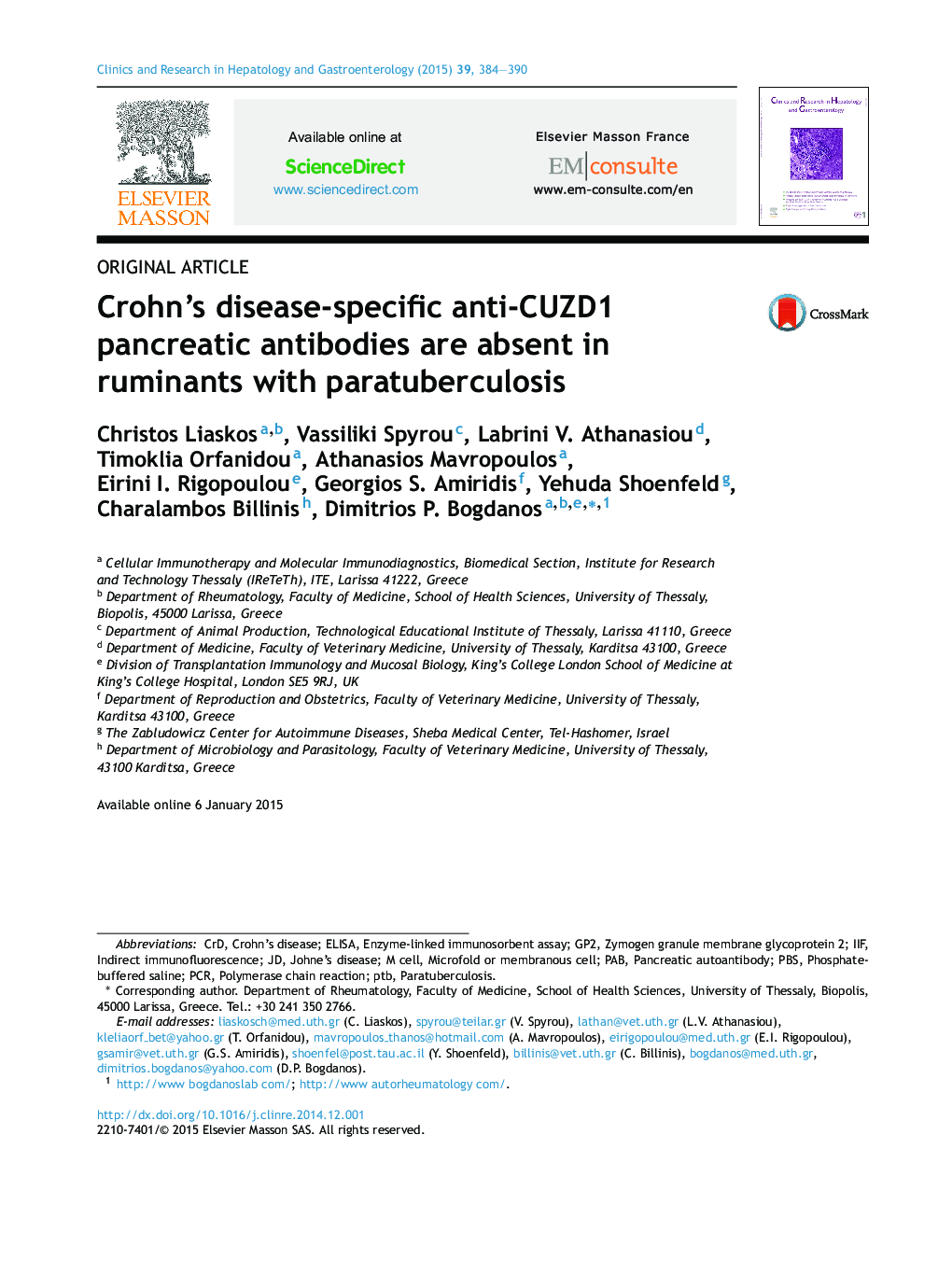| Article ID | Journal | Published Year | Pages | File Type |
|---|---|---|---|---|
| 3286204 | Clinics and Research in Hepatology and Gastroenterology | 2015 | 7 Pages |
SummaryBackgroundPancreatic autoantibodies (PABs) specifically recognizing GP2 and/or CUZD1 are present in more than 35% of patients with Crohn's disease (CrD). We have recently provided evidence of the presence of GP2-specific PABs in ruminants with paratuberculosis (ptb), a Mycobacterium avium paratuberculosis (MAP)-induced disease resembling CrD.ObjectiveTo assess whether anti-CUZD1 antibodies are also present in ruminants with ptb.MethodsA total of 110 samples (73 cattle/37 sheep) were studied including 40 with ptb (24 cattle/16 sheep; 20 anti-GP2 antibody pos) and 70 without ptb (49 cattle/21 sheep; 10 anti-GP2 antibody pos). The samples were pre-characterized for anti-MAP and anti-GP2 antibodies by ELISA. Evidence of MAP was confirmed by PCR. Anti-CUZD1 antibody testing was performed by indirect immunofluorescence (IIF) based on transfected HEK293 cells expressing CUZD1. Anti-sheep or anti-cattle specific antisera were used as revealing antibodies.ResultsNone of the ruminant sera had anti-CUZD1 antibodies by IIF testing at dilutions varying from 1/10 to 1/160. Methodological flaws were prevented by a series of tests. Control sera from anti-CUZD1 positive CrD samples have shown anti-CUZD1 antibody reactivity at various concentrations. Antibody reactivity to GP2-expressing HEK293 cells has confirmed the reactivity to GP2 in ruminant sera found positive for anti-GP2 antibodies by ELISA.ConclusionThe present study has found no evidence of anti-CUZD1 PABs in MAP-induced ptb. Our findings indicate that the induction of CUZD1-specific PABs is unrelated to MAP infection and that the mechanisms responsible for the loss of tolerance to GP2 and CUZD1 are probably quite distinct.
